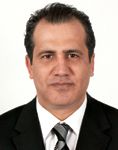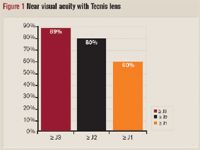Article
Multifocal IOLs deliver for carefully selected candidates
Patients should be made aware of the possibility of nighttimeissues with lights and glare and halo problems.
Istanbul, Turkey-An evaluation of two new multifocal IOLs-Tecnis MF and ReZoom by Advanced Medical Optics-indicated that both correct far, intermediate, and near vision and reduce the patient's dependency on glasses.

Patients were considered for refractive lens exchange (RLE) if they were less than 45 years old, had high myopia or hyperopia, and were not suitable candidates for either LASIK or implantation of phakic IOLs; patients who were older than 45 years with high myopia or low and high degrees of hyperopia and were not suitable candidates for LASIK; and those who were presbyopic. Contraindications to RLE are low myopia and high corneal astigmatism, Dr. Toygar explained.
In addition, Dr. Toygar advised that when considering implantation of a multifocal IOL, the patient should have relatively healthy eyes. Patients may be candidates if they have postoperative astigmatism of less than 1.5 D, postoperative emmetropia, or a maximum 0.75 D of hyperopia. The patients should also be highly motivated, such as those who wear high-diopter spectacles, those who are hyperopic, and those who want independence from spectacles. He also advised that the patient's profession be considered.
Patients were excluded if there were any macular pathologies or glaucoma with severe visual field loss, if they had undergone a previous corneal refractive surgery, if a monofocal IOL was already in one eye, if the expected astigmatism would exceed 1.5 D, and if the expected myopia would exceed 0.5 D.

Modified prolate
The Tecnis IOL has an anterior surface (modified prolate) that compensates for spherical aberration and the diffractive pattern is on the posterior side. The IOL is a three-piece UV-absorbing high-refractive silicone IOL with cut-off at 392 to 394 nm. It has a total diameter of 12 mm and an optic diameter of 6 mm. The lens is designed with a sharp optical edge to minimize posterior capsular opacification (PCO), he said.
The Tecnis was implanted in 37 eyes of 20 patients (nine women, 11 men) who ranged in age from 22 to 65 years (mean age, 47.38 ± 11.16 years) and were followed for 3 months. The preoperative spherical equivalent (SE) ranged from –15.50 to +7.5 D. Postoperatively, the spherical equivalent was –0.38 to +1.0 D.
Newsletter
Don’t miss out—get Ophthalmology Times updates on the latest clinical advancements and expert interviews, straight to your inbox.




